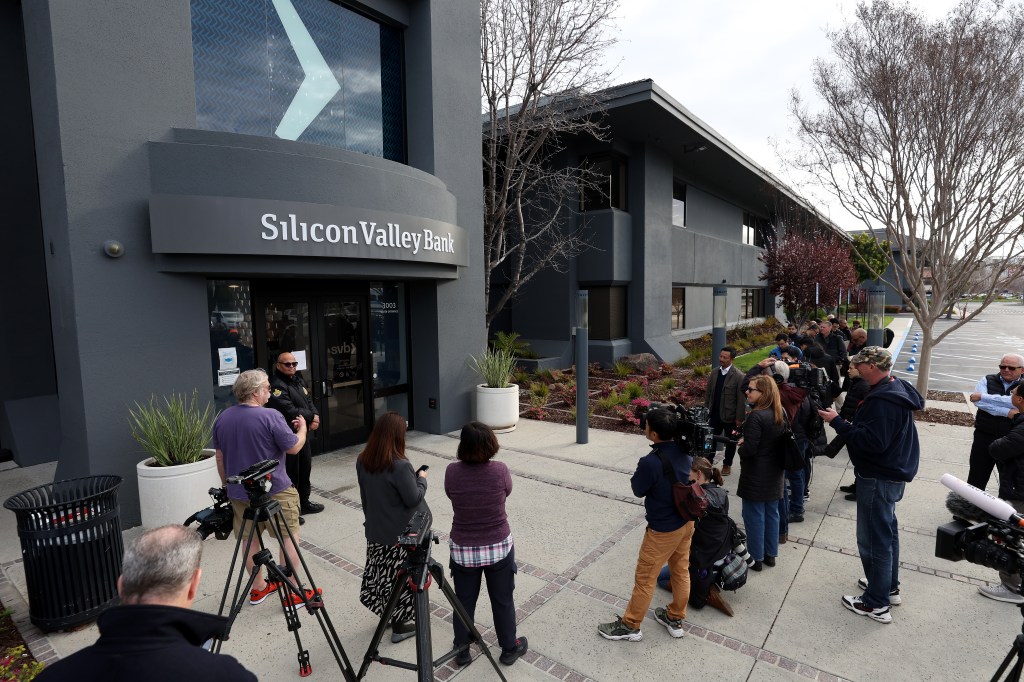Silicon Valley Bank (SVB) was 40 years old and the 16th largest lender in the US. Its downfall took less than 40 hours. Depositors sought to withdraw $42bn in a dizzyingly fast ‘run’ on March 9.
It was one of three US lenders that went under in the same week. The woes experienced by SVB have highlighted an emerging risk for some institutions that invested in a one-dimensional way when interest rates were low. Long-dated bonds that have fallen in value as interest rates have accelerated are to blame. The mismatch between the age of these bonds and the short-term liabilities of SVB led to its demise. There are lessons to be learnt.
SVB’s customer base was not diverse by any means – it had been set up to offer banking services to technology companies of all sizes and maturity, many of which hailed from the Bay area in San Francisco. At the time it went out of business it was banker to almost half of all VC-backed start-ups in the US. SVB was unique in offering credit to usually unprofitable technology companies trying to make it beyond seed financing, to scale to the vaunted ‘unicorn’ status and the ultimate goal of IPO.
Time to mark-to-market
US capital rules do not require a mark-to-market discipline for banks of a certain type until an asset matures. This accounting anomaly might need reform. The previous administration had diluted controls put in place after the 2008 financial crisis under the Volcker rule which allowed SVB to invest more aggressively with unforeseen dire consequences.
US capital rules do not require a mark-to-market discipline for banks of a certain type until an asset matures. This accounting anomaly might need reform.
The Fed’s swift reaction to this collapse in offering to lend against quality longer-dated collateral (the Bank Term Funding Program) is probably necessary at a time when the markets and retail banking customers are nervous, and the finance system looks fragile. The concern is that this safety net will result in more banks taking greater risk on the assumption the Fed will make their depositors whole in future. Better stress-testing and end of life plans should be obligatory for the raft of smaller US banks that are not as strictly regulated as their larger peers.
Diversity helps
Sadly, the predictable herd behavior of SVB’s homogeneous clients played a big part in its downfall. When rumors of the precarious balance sheet of the bank reached the niche community of technology customers it was built to service, they pressed the self-destruct button by encouraging anyone with money in SVB to get it out through social messaging platforms such as Twitter. This mass withdrawal was all executed with astonishing speed through digital means.
It begs the question how much the venture capital industry understands about banking and finance when it triggered this suicidal run, especially if there was any awareness of the uninsured status of their deposits above $250k by the FDIC. SVB’s clients were too similar and too concentrated. And their concerted movement smacked of the behavior among retail day traders conducting meme trading in the pandemic.
SVB’s relative comfort with risk, based on its customer base, may have driven its investment strategy. This comprised favorable mortgages to entrepreneurs, treasuries, long-dated bonds and some VC schemes. The strategy has strong hints of conflict and does not reflect any need for a diverse portfolio of mixed-dated assets. The absence of a CRO for a year before the bank’s fall may also have played its part.
Often at odds with the tech world, and generally always accused of stifling innovation, it was big administration that came to the rescue of the technology sector at its moment of need.
The final irony in this curious case is the role of government. Often at odds with the tech world, and generally always accused of stifling innovation, it was big administration that came to the rescue of the technology sector at its moment of need. Perhaps there will be a price to pay for this help in the times ahead.
And perhaps this is not the last bank wobble we have seen as the rules have been turned upside down. Post-2008 investors thought deposits and treasuries were safe while market funding and loans were risky. The reverse is now in vogue.


